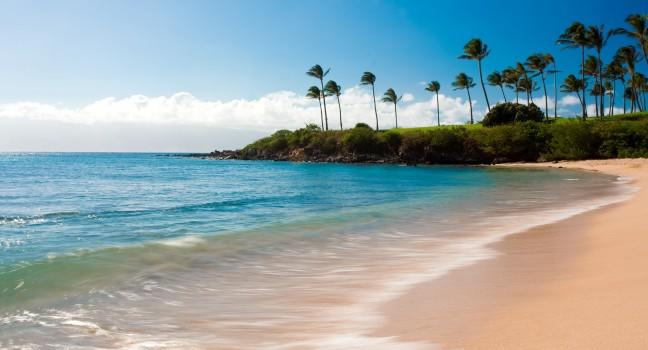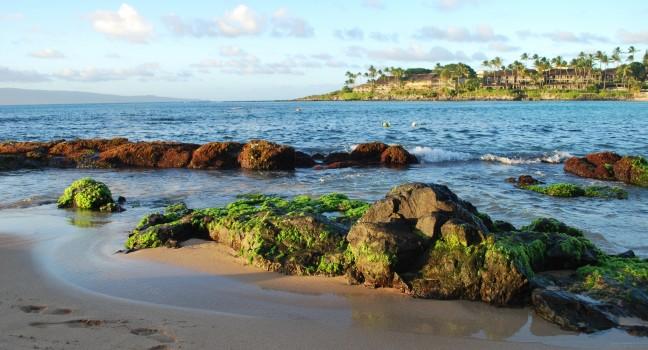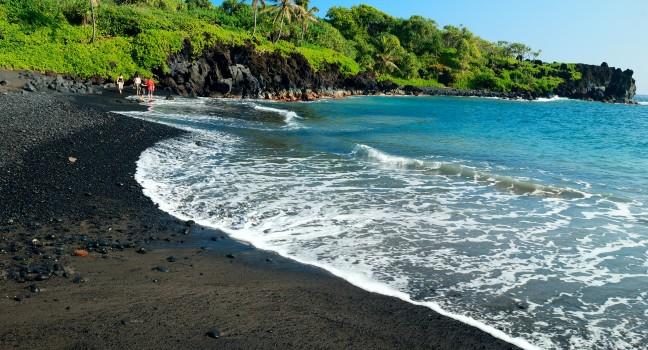If you're looking for quiet and seclusion, this is not the beach for you. But if you want lots of action, spread out your towel here. Stretching from the northernmost end of the Sheraton Maui Resort & Spa to the Hyatt Regency Maui Resort & Spa at its southern tip, Kaanapali Beach is lined with resorts, condominiums, restaurants, and shops. Ocean activity companies launch from the shoreline fronting Whalers Village, making it one of Maui's best people-watching spots. A concrete pathway weaves along the length of this 3-mile-long beach, leading from one astounding resort to the next.
The drop-off from Kaanapali's soft sugary sand is steep, but waves hit the shore with barely a rippling slap outside of winter months. The landmark promontory known as Puu Kekaa (nicknamed "Black Rock") was traditionally considered a leina a ka uhane, or jumping-off place for spirits. It's easy to get into the water from the beach to enjoy the prime snorkeling among the lava-rock outcroppings.
Strong rip currents are often present near Puu Kekaa; always snorkel with a companion.
Throughout the resort, blue "Shoreline Access" signs point the way to a few free-parking stalls and public rights-of-way to the beach. Kaanapali Resort public beach parking can be found between the Hyatt and the Marriott, between the Marriott and the Kaanapali Alii, next to Whalers Village, and at the Sheraton. You can park for a fee at most of the large hotels and at Whalers Village. The merchants in the shopping village will validate your parking ticket if you make a purchase. Amenities: parking (no fee); showers; toilets. Best for: snorkeling; sunset; swimming; walking.






